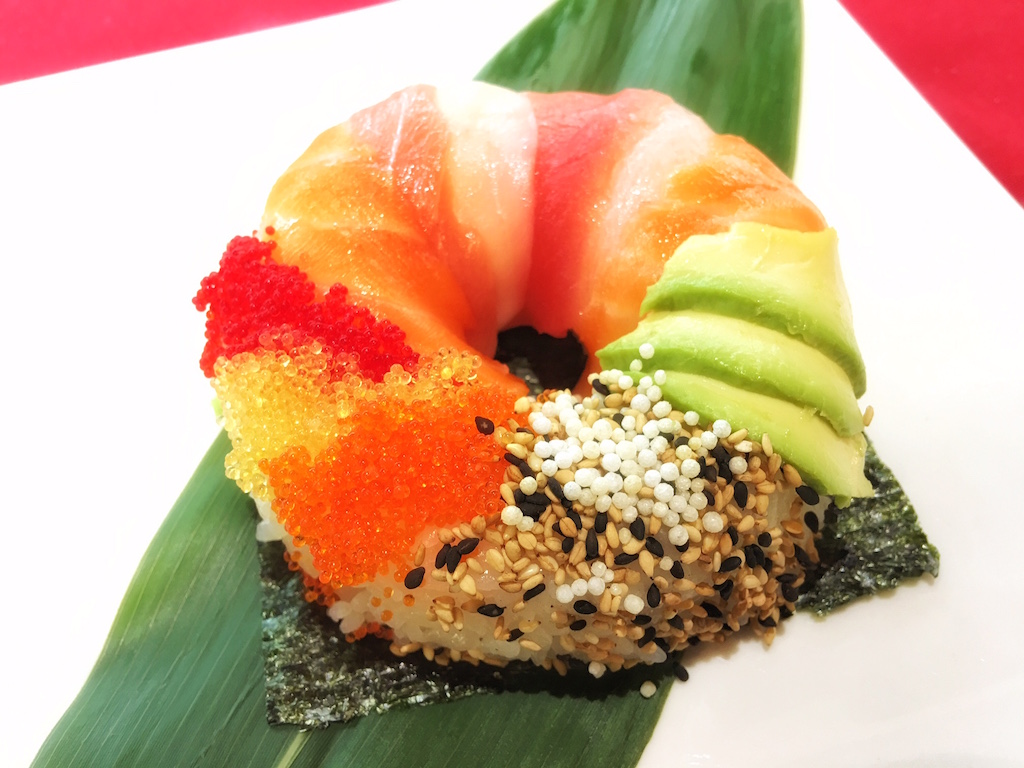 We'll take a dozen
We'll take a dozen
Mar 21, 2019
ARLINGTON, VA -- When you think of sushi, you probably think of the maki roll: rice, fish, and veggies or fruit rolled up in seaweed paper (nori) and sliced into bite-sized little disks. From California’s sushi burrito to Toronto’s sushi pizza, chefs and restaurants across the U.S. are taking advantage of customer demand for unique, Instagram-able dishes to experiment with the traditional sushi form, and they’re using U.S.-grown rice to do it.
Enter the latest craze in pioneering sushi configurations: the sushi donut.
Shoji Mochizuki and Rosie Gordon opened Sushi-Zen in Arlington, Virginia, in 1997 with the mission of serving authentic sushi using premium ingredients. The sushi donut didn’t debut until twenty years later, when their son Brian Mochizuki, now vice president of operations and general manager of Sushi-Zen, decided to explore some new adventurous options for the menu.
Mochizuki saw a version of sushi donuts being made in California on social media, was struck with inspiration, and realized that there were no restaurants in the DC area offering the unusual menu item. So he got to work, experimenting with ingredients, technique, and form until he developed a sushi donut that customers loved.
U.S. rice is an essential part of the sushi donut formula. Sushi-Zen exclusively uses Tamaki Gold short grain white rice and Lundberg Farms short grain organic brown rice, both grown in California.
“The most important ingredient when making sushi is the rice,” Mochizuki says. “Tamaki Gold has the perfect stickiness for making sushi and is able to hold its flavor and texture over time. You can really tell if rice is good quality by how well it’s able to keep its texture as it cools down after being mixed with rice vinegar. Some rice can become too sticky and is harder to handle when making sushi. But with Tamaki Gold, you can still feel the individual grains in your mouth when eating it.”
Mochizuki adds that buying U.S.-grown ensures the freshness of the rice, which is crucial for good sushi. “Importers store rice for long periods of time before shipping it to the purchaser. By using U.S.-grown rice, we eliminate the time the rice spends traveling on a boat. When Tamaki Gold packages their rice for customers, they do it by order.”
The sushi donut has been a popular addition to the Sushi-Zen menu. A rainbow of salmon, tuna, avocado, and roe, it’s delicious and very social media friendly. But it can be a little intimidating if you don’t know how to tackle it.
Mochizuki said that the best way to eat a sushi donut is just to eat it, well, like a donut. “When people order a sushi donut, their first reaction is ‘wow, that looks amazing.’ Their second reaction is ‘how do I eat that?’” The dish is served atop a piece of nori that keeps the donut shape surprisingly sturdy as you eat it.
Mochizuki plans to continue trying new sushi shapes using U.S. rice as his medium. “I do enjoy experimenting. It can really bring out the creativity in a chef’s mind.”